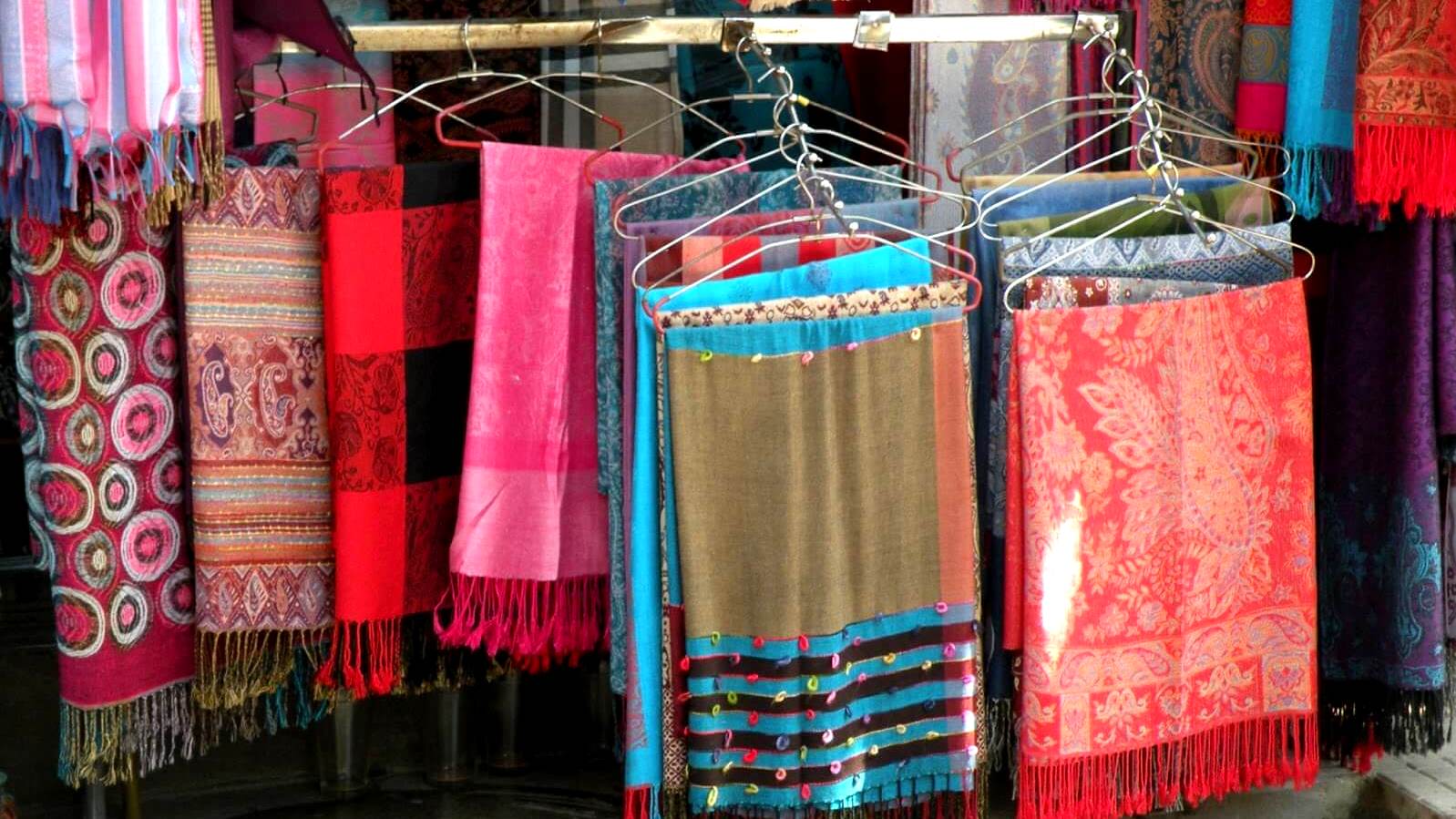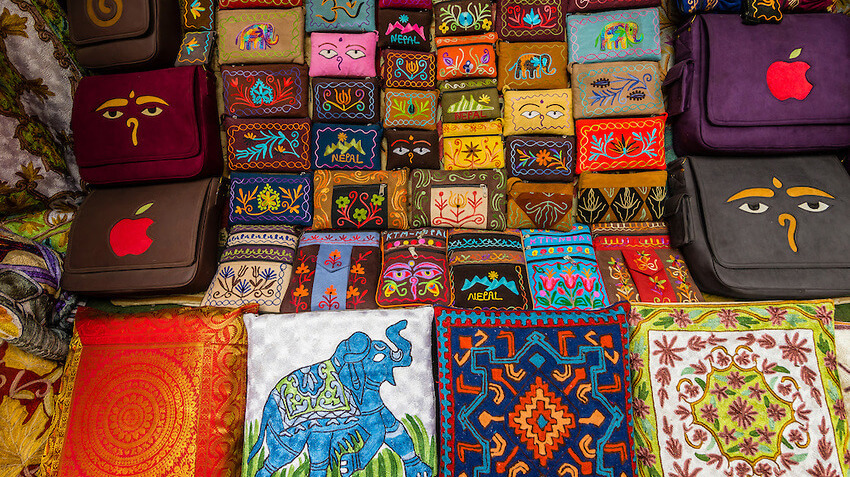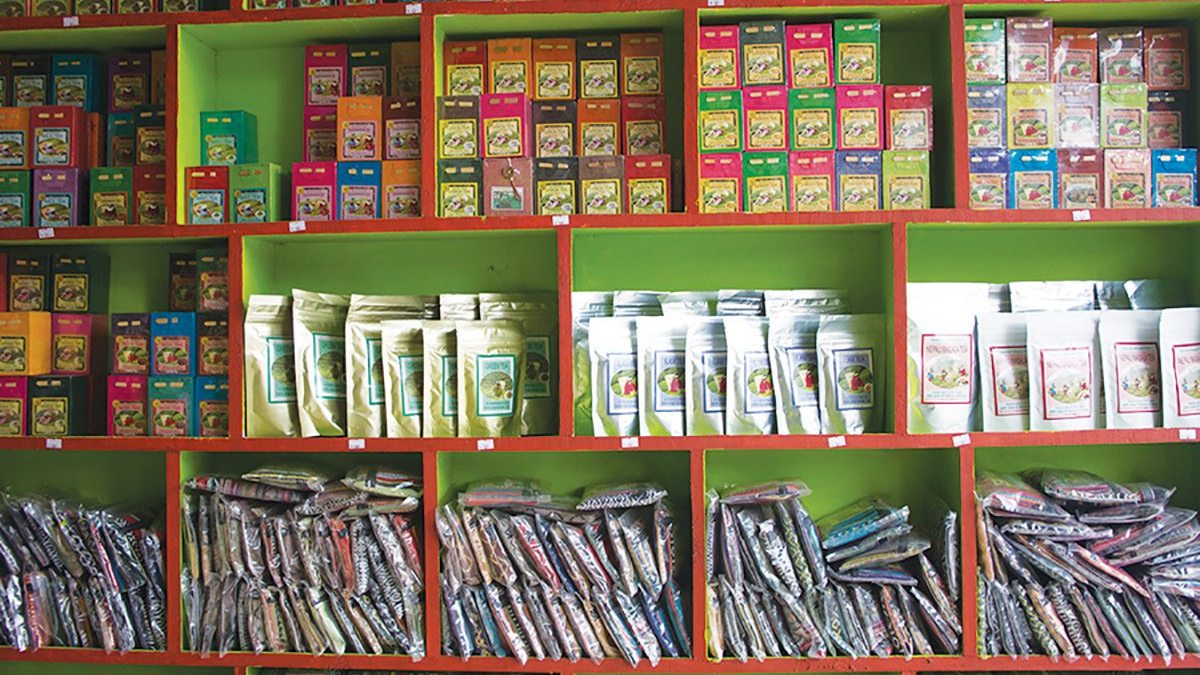Nestled amidst the towering peaks of the Himalayas, Nepal is not only a destination for trekkers but also a paradise for shoppers. From the bustling streets of Kathmandu to the tranquil lanes of Pokhara, the country offers a myriad of shopping opportunities. Delight in the purchase of authentic pashmina, revel in the artistry of traditional handicrafts, and immerse yourself in the rich tapestry of culture as you explore traditional Nepali clothing stores. With a diverse range of products, from the spiritual resonance of singing bowls to the intricate designs of Tibetan jewelry, shopping in Nepal is an experience that promises both variety and authenticity. Dive into this guide to unearth the treasures of Nepalese commerce.
At Luxury Holidays Nepal, we pride ourselves on being more than just a travel company; we are your ultimate shopping guide in the Himalayan nation. When it comes to shopping while you are in Nepal, no one understands the landscape better than we do. With years of experience catering to global travelers, we've intricately woven the best shopping destinations into our itineraries, ensuring our guests not only witness the beauty of Nepal but also take a piece of it home. From guiding you to the most authentic pashmina sources to helping you explore hidden gems in local handicrafts, our expertise ensures an unparalleled shopping experience. Dive into the rich tapestry of Nepali culture with Luxury Holidays Nepal as your trusted companion, and discover why we're celebrated as the best in the business.
Diverse Shopping Destinations
Here are some major shopping destinations in Nepal:
Nepal, often recognized for its majestic Himalayas and rich cultural heritage, is also a haven for shopping enthusiasts. The country's shopping scene mirrors its cultural and geographical diversity, providing a myriad of options for every kind of traveler.
Kathmandu: The capital city, stands as a testament to this diversity. Its urban sprawl is punctuated with markets that are a blend of the old and new. Areas like Thamel and New Road are bustling hubs where one can find everything from modern gadgets to traditional crafts. On the other hand, places like Asan offer a more traditional shopping experience, where narrow alleys are lined with stalls selling spices, textiles, and local handicrafts.
Pokhara: The tranquil lakeside town, offers a different vibe altogether. The Lakeside Market is a must-visit, dotted with shops selling trekking gear, local crafts, and souvenirs. Here, one can also find beautifully crafted silver jewelry, Tibetan artifacts, and hand-woven pashminas.
Local Products: Venturing beyond the cities, the hillside villages present a unique shopping experience. Local bazaars are windows into the region's culture and way of life. In places like Bandipur or Ghandruk, one can purchase hand-knitted woolen goods, organic teas, and honey, or traditional Gurung and Magar crafts, which are hard to find elsewhere.
In essence, shopping in Nepal is not just a transaction; it's an exploration. It's about discovering the tapestry of cultures, traditions, and stories that the nation is woven from. Whether you're a seasoned shopaholic or a curious traveler, Nepal's diverse shopping destinations promise a rich and rewarding experience.
Quality Textiles of Nepal
The textile landscape of Nepal is as varied and vibrant as its topographical and cultural tapestry. With a legacy that dates back centuries, Nepali textiles are not just fabric; they're narratives of tradition, skill, and artistry woven together. These textiles, crafted with dedication, resonate with the ethos of the land and its people.
Pashmina: Perhaps the crown jewel of Nepali textiles, Pashmina is derived from the undercoat of the Himalayan goats. Revered globally for its unparalleled softness and warmth, genuine Pashmina shawls and scarves are hand-spun and hand-woven, often with intricate patterns and embroideries.

Dhaka: Originating from the eastern regions, Dhaka is a hand-woven fabric characterized by its vibrant geometric patterns. Traditionally used in the national dress, Dhaka is now also crafted into accessories like hats, purses, and shawls.
Yak Wool: Harvested from yaks that roam the high Himalayan regions, yak wool is another textile that stands out for its warmth. Blankets, shawls, and sweaters made from yak wool are popular among locals and tourists alike.
Hemp and Nettle: Grown in the hilly regions, wild hemp and nettle are transformed into durable fabrics. These sustainable textiles are utilized to craft bags, clothes, and other accessories.
Silk: Although not as prolific as in other Asian countries, Nepal produces a unique form of silk, often blended with other fabrics to create sarees, shawls, and dresses.
Cotton: Predominantly grown in the Terai plains, Nepali cotton is often hand-spun and woven into a variety of garments, from casual wear to traditional attire.
Felt: Colorful felt products, from mats to decorative items, are also a significant part of Nepal's textile scene, often embellished with patterns and motifs.
Tibetan Rugs: With Tibetan influences permeating Nepali culture, hand-knotted woolen Tibetan rugs with Buddhist symbols and Himalayan motifs are sought after for their craftsmanship and aesthetics.
Raw Silk and Bamboo Fabrics: In recent years, there's been a rise in the use of alternative textiles like raw silk and bamboo, known for their eco-friendliness and unique textures.
The quality textiles of Nepal are a testament to the nation's craftsmanship, innovation, and cultural diversity. Each thread tells a story, and every fabric carries the warmth, spirit, and legacy of Nepal. Whether you drape, wear, or adorn your homes with them, these textiles serve as a tangible connection to the heart of the Himalayas.
Authentic Handicrafts of Nepal
Nepal, a nation teeming with cultural richness and artistic heritage, boasts an array of authentic handicrafts that reflect its millennia-old traditions and craftsmanship. These handicrafts, crafted meticulously by skilled artisans, serve as both functional items and beautiful keepsakes that capture the essence of Nepal.
Wood Carvings: The intricate woodwork, especially seen in the temples and traditional houses, is a testament to Nepal's legacy of wood crafting. Window frames, statues, and masks are popular wooden souvenirs, showcasing delicate carvings and designs.
Thangka Paintings: These are traditional Buddhist scroll paintings, often used for meditation. Created with meticulous precision, they depict deities, mandalas, and spiritual stories.
Metal Crafts: Nepal is famed for its exquisite metalwork, especially in brass, bronze, and copper. Items range from religious idols to decorative pieces like vases and plates.
Pottery: The town of Bhaktapur is particularly known for its pottery. Artisans shape clay into pots, vases, and figurines, often using traditional potter's wheels.
Jewelry: Be it silver works from the Newar community or bead jewelry from the hills, Nepali jewelry carries unique designs and stories.

Lokta Paper Products: Made from the bark of the Lokta bush, this eco-friendly paper is used for notebooks, stationery, and decorative items. Its durability and unique texture make it highly sought after.
Rice Paper Paintings: These are traditional paintings done on rice paper, often depicting Himalayan landscapes, flora, fauna, and local life.
In Nepal, each handicraft carries a tale of its origin, reflecting the diverse cultures, beliefs, and traditions of its people. Acquiring these items isn't just a purchase; it's an intimate connection to the heart and soul of Nepal. So, while you explore the nooks and corners of this Himalayan paradise, ensure you delve deep into its artistic world, bringing back not just souvenirs but memories etched in craftsmanship.
Nepali Tea and Spices
When wandering the bustling streets of Nepal, whether it's the vibrant markets of Kathmandu or the serene lanes of Pokhara, it's hard to miss the aromatic allure of Nepali tea and spices. These flavorsome treasures are deeply rooted in the country's traditions and culinary heritage, making them a must-buy for anyone looking to take home an authentic taste of Nepal.
Nepali Tea: The foothills of the Himalayas provide an ideal climate for tea cultivation, giving birth to some of the world's finest teas. Nepali tea is distinguished by its rich flavor, aroma, and the meticulous process it undergoes from leaf to cup.
-
Orthodox Tea: This hand-processed tea is known for its delicate flavors and is often compared to the famed Darjeeling tea.
-
Ilam Tea: Originating from the Ilam district, this tea has garnered international acclaim for its unique aroma and taste. It comes in both green and black varieties.
-
Dhankuta Tea: Another notable name in Nepali teas, Dhankuta tea is appreciated for its subtle flavor profiles and aromatic richness.

Nepali Spices: Nepal's diverse topography and climate have blessed it with a myriad of spices that form the backbone of its cuisine. These spices not only elevate dishes but also carry medicinal properties, as recognized in Ayurveda.
-
Timur (Szechuan Pepper): This native spice is known for its zesty and tangy flavor, often leaving a tingling sensation on the palate. It's a key ingredient in many Nepali dishes.
-
Jimbu: A unique Himalayan herb, jimbu is sun-dried and used as a flavoring agent in various dishes, imparting a distinct aroma.
-
Asafoetida (Hing): Used in minute quantities, this pungent spice adds a subtle flavor to dals and curries.
-
Cardamom: Both black and green cardamom are grown in Nepal and are popular for their fragrant and aromatic properties.
-
Ginger and Turmeric: Cultivated extensively in the Terai and hilly regions, these rhizomes are integral to Nepali cuisine and are prized for their health benefits.
-
Chillies: Whether dried, powdered, or fresh, Nepali chillies range from mild to fiery hot and add zest to the dishes.
Buying these items is not just about acquiring products; it's an opportunity to engage with local vendors, learn about the traditions associated with these goods, and delve deep into Nepal's rich gastronomic landscape. So, when in Nepal, be sure to indulge your senses and stock up on these delightful teas and spices. They serve as perfect gifts, evoking the flavors and aromas of this beautiful nation every time they're savored.
Unique Souvenirs from Nepal
Nepal, with its rich cultural tapestry and diverse heritage, offers a plethora of unique souvenirs that allow travelers to take a piece of the Himalayan kingdom home. From artisanal crafts to traditional keepsakes, here's a guide to some of the most distinct memorabilia you can acquire from Nepal:
Khukuri: This iconic curved knife is synonymous with the brave Gurkha soldiers. A Khukuri is not just a weapon but a symbol of honor and bravery. Crafted with precision, it makes for a unique and historically rich souvenir.
Singing Bowls: Often used for meditation and healing rituals, these bowls produce harmonic tones when struck or circled with a mallet. They're believed to promote relaxation and chakra balancing.
Thangka Paintings: These traditional scroll paintings, depicting Buddhist deities and symbols, are meticulously crafted using natural pigments and serve both spiritual and decorative purposes.
Tibetan Jewelry: Crafted with intricate designs, Tibetan jewelry, including turquoise, coral, and silver pieces, resonate with spiritual symbolism and Himalayan aesthetics.
Bead Crafts: Colorful necklaces, bracelets, and other jewelry items made from glass, bone, and seeds are popular among the hill tribes and make for vibrant keepsakes.
Nepali Spices and Herbs: Take home the flavors of Nepal with spices like timur (Szechuan pepper), jimbu (Himalayan herb), and other local seasonings.
Dhaka Fabric Products: From purses to hats, items made from the vibrant Dhaka fabric are representative of Nepali textile artistry.
Wooden Masks: Hand-carved and often painted, these masks depict various deities and cultural symbols and make for captivating wall decor.
Each of these souvenirs carries the essence of Nepal – its traditions, beliefs, and the impeccable craftsmanship of its artisans. They're not just items but memories and stories waiting to be shared.
Bargaining Culture in Nepal
In Nepal, the art of bargaining is deeply rooted in the local shopping culture. Whether you're browsing through bustling street markets or quaint handicraft shops, haggling over prices is a common practice and often expected. This is not just about getting a good deal; it's a social interaction, a dance between buyer and seller. For tourists, understanding this bargaining culture can enhance the shopping experience and make it more enjoyable. It's essential to approach the process with respect and a friendly demeanor. Start by offering a price that's around 60-70% of the initial asking price, and then gradually negotiate from there. While it's okay to drive a hard bargain, it's crucial to remain courteous and remember that for many sellers, this is their primary livelihood. Also, do a bit of research or ask locals about the average price of items to avoid overpaying. If a deal is reached, it's seen as a mutual agreement, a win-win for both parties. If not, it's customary to part on good terms, with a smile and a nod. Embracing the bargaining culture in Nepal not only ensures you get value for your money but also allows you to engage more deeply with the local way of life.
To set foot in Nepal is to embark on a journey of sensory delight, and shopping here is no exception. From the intricate designs of handicrafts to the rich aroma of Nepali teas and spices, every item tells a story of the nation's rich heritage, traditions, and the unparalleled craftsmanship of its artisans. The bustling markets of Kathmandu, the serene lanes of Pokhara, and the traditional bazaars in hillside villages all offer treasures waiting to be discovered. However, as with all treasures, it's essential to tread with care and awareness, especially concerning customs regulations. As you wrap up your trip and select mementos to carry back, remember that each piece is not just a souvenir but a slice of Nepal's soul. So, whether you're draping a Pashmina shawl around your shoulders, sipping on authentic Nepali tea, or adorning your home with a Thangka painting, you're forever entwined with the spirit of this Himalayan wonderland. Shopping in Nepal is not just a transaction; it's an experience, a memory, and a bond that lasts a lifetime.
FAQs for Shopping While You are in Nepal
Q. What are the must-buy items when shopping in Nepal?
A. Nepal is renowned for its handicrafts, pashmina shawls, Nepali teas, Tibetan jewelry, thangka paintings, Bhaktapur pottery, and Lokta paper products, among other unique souvenirs.
Q. Where are the best places to shop in Kathmandu?
A. Thamel is a popular shopping district in Kathmandu, offering a wide range of products. Other notable places include Patan for handicrafts and Boudhanath for Tibetan goods.
Q. Is it customary to bargain in Nepal?
A. Yes, bargaining is a common practice in Nepal, especially in local markets. However, it's essential to negotiate respectfully, ensuring both parties are content with the price.
Q. Where can I buy genuine pashmina in Nepal?
A. For authentic pashmina, consider visiting specialized boutiques and stores that provide certification of authenticity. Research or seek local recommendations to find reputable shops.
Q. Are there any restrictions on taking antiques out of Nepal?
A. Yes, there are regulations in place concerning the export of antiques or religious artifacts. Always check with local authorities and ensure you have the necessary documentation.
Q. What are some popular spices to bring back from Nepal?
A. Timur (Szechuan pepper), jimbu, cardamom, and turmeric are among the many spices you can take home as a flavorful reminder of Nepal.
Q. Where can I find fair trade shops in Nepal?
A. Nepal boasts several fair trade shops, especially in major cities like Kathmandu and Pokhara. These shops promote ethically produced goods and ensure artisans receive fair compensation.
Q. How do I ensure I'm buying authentic Tibetan rugs in Nepal?
A. Purchase Tibetan rugs from reputable dealers, and always ask for details about the rug's origin, craftsmanship, and materials.
Q. Is it safe to shop late in the evening in Nepal?
A. While major cities like Kathmandu and Pokhara are relatively safe, it's always wise to be cautious and avoid isolated areas after dark.
Q. What currency is accepted in Nepali markets?
A. The Nepali Rupee (NPR) is the official currency. While some shops, especially in tourist areas, might accept USD or other major currencies, it's recommended to have local currency on hand for smoother transactions.
Important Articles regarding traveling in Nepal
Introduction of Nepal
FOODS IN NEPAL
Before You Plan Nepal Trip
While You are in Nepal
Before Traveling Nepal
If you need any further information, please contact us, Email: [email protected], Phone: +977- 985 100 5129 (WhatsApp)




